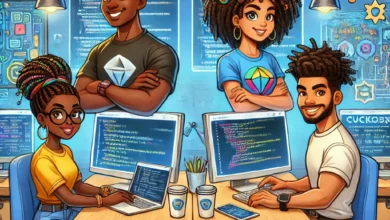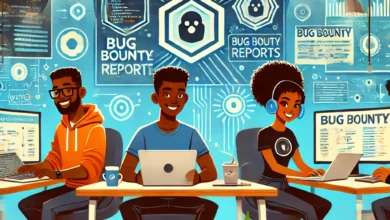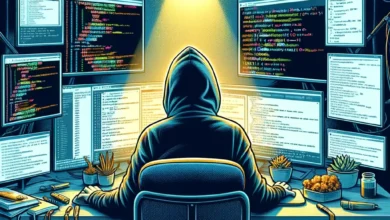The Art of Manipulation: Understanding Social Engineering Attacks
Breaking Down the Human Side of Cyber Threats

Hey there, digital explorer! In an age where the online world is second nature to you, you’ve skillfully navigated the vast maze of the internet, sidestepping those sneaky data traps and raising an eyebrow at links that seem too good to be true. You’ve probably got your favorite apps on lock, mastered the art of discerning real news from the fake, and grown adept at spotting bots from genuine profiles. Yet, even with all your tech-savvy prowess, some threats are rooted not in the intricate codes or algorithms but in the timeless art of human deception. The convergence of classic manipulation tactics with the digital age has given birth to a cunning beast: social engineering. This is where the digital highway meets the dark alleys of psychological tricks.
Decoding the Mysteries of Social Engineering 🧠
Digital Deceptions 101: Remember those childhood pranks where a friend would trick you into revealing your secret crush, only to shout it out to the entire playground? That sting of betrayal is a rudimentary form of manipulation. Now, imagine that feeling transposed into our vast digital landscape where stakes are higher and consequences more profound. Welcome to the world of social engineering.
It isn’t just about sending a misleading email or a sneaky text message; it’s a sophisticated dance of deceit, playing on human emotions, trust, and inherent vulnerabilities. While the digital realm boasts state-of-the-art security measures and firewalls, hackers with a flair for social engineering bypass these by targeting our inherent need to trust, to help, and sometimes, our simple curiosity. Instead of a brute force attack on a system, they go for the human element—the most unpredictable and, paradoxically, the most predictable of all weak points.
In a world that’s constantly evolving with new technologies, social engineering stands out, not because it’s the newest trick in the book, but because it’s the oldest. It reminds us that beneath all our tech-savvy exteriors, we’re still human, with all the emotions and frailties that come with it.
Unmasking Digital Deceit: Behind the Scenes of Online Imposters 🎭
Phishing: Think of this as the dark twin of actual fishing. You receive an email, seemingly from a trusted source like “your bank” or “your favorite online store,” urging you to act fast and click a link. It all looks legit, but hidden behind that innocent call to action lies a trap. One misguided click, and just like that, a scheming hacker could be feasting on your private credentials.
Pretexting: Here, hackers are like method actors, immersing themselves in roles to gain your trust. They could impersonate anyone—tech support, a tax official, or even a concerned colleague, weaving elaborate tales of crises that, conveniently, only your personal information can resolve. The stories are fiction, spun from thin air, but the danger they pose is undeniably real.
Baiting: The old saying “curiosity killed the cat” has never been more relevant. Baiting preys on our innate curiosity. Imagine stumbling upon a USB stick labeled “Unreleased Movie Footage” or a download link promising “The Ultimate Life Hacks.” It’s tempting to take a peek, but the moment you do, you might be gifting a hacker unrestricted access, all while malware wreaks havoc on your device.
Tailgating: A deceptive technique rooted in the real world. Picture this: an individual waits outside a secure building, maybe even holding a bunch of coffees, giving off the vibe they belong. They time their entry right behind an authorized employee, maybe even throwing in a casual “Forgot my access card again!” Most people, being the kind souls they are, would hold the door open, unaware they’ve just allowed a security breach.
Quizzing: It’s no secret that we love online quizzes. Finding out “Which Dessert Matches Your Personality” or “Your Dream Vacation Spot” seems harmless fun. But beware! Some quizzes are designed to extract information that aligns with common security questions. Before you know it, your innocent answers could be the missing puzzle pieces for hackers trying to crack into your accounts.
Fortifying Your Digital Domain 🛡️
Navigating the online world comes with its own set of challenges, but with the right tools and mindset, you can ensure a safer journey:
- Trust, But Verify: In the digital age, it’s wise to approach things with a blend of trust and caution. It’s great to trust, but even better to validate. Whether it’s an email from an unknown sender or a sudden friend request on social media, always pause, reflect, and confirm its legitimacy. A few extra seconds spent verifying can save you from potential hours of damage control.
- Educate and Share: Knowledge is most powerful when it’s shared. Regularly update yourself on the latest cyber threats and safety measures. And don’t stop at self-awareness. Spread the word among friends, family, and colleagues. By creating a well-informed network, you transform each individual into a living firewall, making it significantly harder for hackers to penetrate.
- Tech Armor: Think of your devices as fortresses. They’re only as strong as their defenses. Regularly update your antivirus software, ensuring it’s equipped to combat the latest threats. Employ robust firewalls to act as gatekeepers against unwanted intrusions. And always remember, in the unpredictable realm of the internet, accidents happen. Safeguard your precious data by maintaining regular backups, so you’re always prepared for any eventuality.
Nurturing Digital Discipline: More Than Just Tools
Navigating the vast cyber realm requires more than just powerful digital tools; it’s the habitual patterns and everyday choices that often play a defining role. Think of it as your dietary routine – the best organic foods are of little help if you’re constantly snacking on junk.
- Adapt and Upgrade: In the rapidly advancing world of tech, yesterday’s innovation can be today’s antique. Stay alert to shifts and innovations. Regularly updating your software and apps not only ensures optimized performance but also fortifies against newly identified vulnerabilities.
- Rethinking Passwords: While it’s challenging to remember a myriad of complex passwords, opting for the universally mocked ‘password123’ is an open invitation to hackers. Dive into the world of password managers – these digital vaults not only store but can also generate strong passwords for you. And as an added layer of protection, always activate two-factor authentication wherever it’s available.
- Public Wi-Fi: A Double-Edged Sword: The allure of free Wi-Fi, especially when you’re running low on data, is undeniable. But tread with caution. Public networks can be riddled with cyber threats and eavesdroppers. If you find yourself needing to connect, always use a Virtual Private Network (VPN) to create a secure and encrypted connection.
- Guard Your Digital Gates: It’s tempting to click ‘Allow’ for every app permission request, especially when in a hurry. But be discerning. Why would a basic calculator app need access to your camera or contacts? Regularly review and prune app permissions. Remember, every unnecessary permission granted is a potential doorway for cyber threats.
Deepen Your Digital Knowledge
In this dynamic digital era, where threats constantly morph and evolve, it’s imperative to be ever-vigilant and consistently updated. It’s not merely about thwarting potential threats but embracing a proactive mindset that prioritizes learning and growth. By setting aside dedicated time each month, you invest in an armor of knowledge, fortifying your defenses against the myriad of cybersecurity challenges that arise.
Podcasts, with their bite-sized yet insightful discussions, have become a favored medium for many to understand intricate topics on the go. Coupled with this, webinars offer a deeper dive, bringing in experts from different corners of the cybersecurity world to shed light on specific subjects. And for those with a thirst for comprehensive understanding, online courses provide a structured approach, taking learners from the basics to more advanced intricacies.
The continuous journey of learning in the digital realm is not just about personal protection. It’s about navigating the digital world with confidence, armed with the awareness of potential pitfalls. The more layers of information and expertise you accumulate, the less vulnerable you become. After all, in the vast ocean of the internet, knowledge not only empowers but also acts as a beacon, ensuring you don’t get lost or ensnared in the deceptive nets cast by cyber adversaries.
Connect & Protect: Join the Cyber Community
In the ever-evolving landscape of cybersecurity, staying isolated can be akin to venturing into a forest without a map. Engaging with the cybersecurity community offers a compass and a series of guiding stars, ensuring you don’t stray off the path. This community, a melting pot of enthusiasts, professionals, and those with firsthand experience of cyber threats, is a reservoir of knowledge, stories, and solutions. Each individual’s experience weaves into a tapestry of collective wisdom that can shield us from potential threats and vulnerabilities.
One of the burgeoning hubs for such interaction and learning is forums. These digital discussion platforms are more than just places for Q&A; they’re where real-world scenarios meet expert solutions, where novices grow into experts, and where every challenge faced by one becomes a lesson for many.
Conventions and workshops, on the other hand, offer a more tactile experience. Here, face-to-face interactions, real-time discussions, and hands-on training sessions provide a comprehensive and immersive learning environment. It’s where theories meet application and where ideas are exchanged at the speed of thought.
Amidst these established communities, there are emerging stars like BugBustersUnited. This fresh addition to the cybersecurity world promises not only to shed light on the latest trends and threats but also to offer innovative solutions and perspectives, fostering a new generation of cyber-aware individuals. The name itself – ‘BugBusters’ – encapsulates the proactive and combative spirit that’s needed in this age of relentless digital challenges.
In essence, by plunging into the heart of the cybersecurity community, you’re not just safeguarding your own digital life but actively contributing to a fortress of shared knowledge and defense. When we come together, learn together, and protect together, the digital realm becomes a safer space for everyone.
Cybersecurity: A Strategic Game
In the expansive theater of the digital age, cybersecurity isn’t just a defensive measure—it’s a dynamic and strategic game, where every player, from novices to experts, has a role to play. Just as a masterful chess player anticipates their opponent’s moves, individuals and organizations must always be several steps ahead in this digital battle against ever-evolving cyber threats.
The digital age has gifted us immense power, offering avenues for communication, innovation, and growth. But with this power comes responsibility. Every time we click, download, or share, we engage in a move on this vast cyber chessboard. The stakes? Our personal data, financial assets, and often, our very identity. The challenge lies not just in knowing the rules but in mastering the strategy, foreseeing threats, and fortifying our defenses.
While technology provides us with the tools—firewalls, VPNs, and encryption—the real strength lies in our ability to adapt, learn, and be vigilant. And as this article underscores, it’s not just about the machines and codes but the people behind them. It’s about understanding that at the core of many cyber threats is an ancient art: manipulation. Recognizing this intertwining of technology and psychology gives us a holistic perspective, ensuring we don’t just react to threats but proactively combat them.
In conclusion, as we navigate this digital odyssey, remember that cybersecurity is more than just defense—it’s an art, a science, and above all, a strategic game. By continuously enhancing our knowledge, building communal defenses, and fostering a culture of cyber-awareness, we not only shield ourselves but also shape a safer digital future for all. As the curtain falls on this narrative, carry forward the torch of awareness, and let’s collectively ensure that in the grand game of cybersecurity, we always emerge as the grandmasters.




